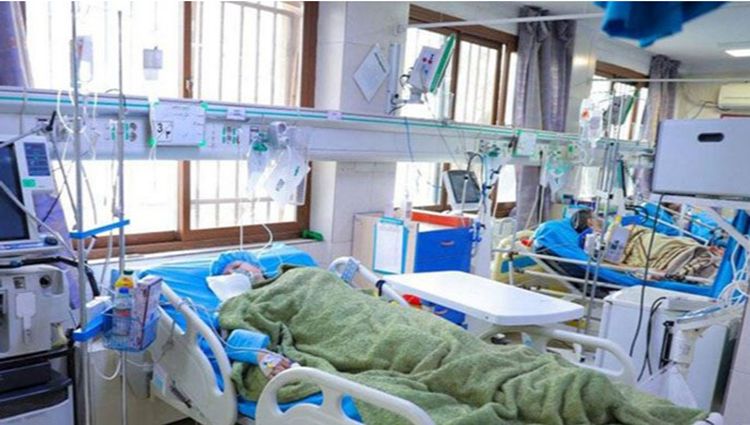Iran: Coronavirus Death Toll In 298 Cities Exceeds 35,800

Written by
Secretariat of the National Council of Resistance of Iran (NCRI)
The People’s Mojahedin Organization of Iran (PMOI / MEK) announced on Sunday, April 26, 2020, the Coronavirus death toll in 298 cities in Iran has exceeded 35,800. The number of victims in Tehran is 5,950, Khorasan Razavi 2,860, Gilan 2,590, Isfahan 2,350, Mazandaran 2,350, East Azerbaijan 1450, Sistan and Baluchestan 750, Ardabil 670, and Yazd 530.
Today, while shamelessly stating, “We don’t know when the Coronavirus outbreak will end and …(and that) the burden is almost completely on people’s shoulders,” Hassan Rouhani said, “In early-May or mid-Ramadan, mosques, religious sites, holy shrines and Friday prayers will reopen per specific protocols in 127 clear (virus-free) areas.” In this way, the clerical regime intends to resume it’s phony religious sermons for political purposes and allow mosques and shrines to financially take advantage of worshipers at the expense of people’s lives and increasing Coronavirus spread.
While Rouhani speaks of 127 clear (virus-free) areas, the regime’s National Coronavirus Combat Taskforce (NCCT) “epidemiologic committee” stated in its latest report published in the state-run daily, Hamshahri, “Semnan, Yazd, Qom, Qazvin, Central, East Azerbaijan, Tehran, Alborz, Isfahan, and Zanjan are among the provinces with a rising trend of the outbreak. The same group of Semnan, Central, and Qom provinces have experienced an upward trend… Mazandaran, Ardabil, Lorestan, Ilam, North Khorasan, Gilan, Kurdistan, South Khorasan, West Azerbaijan, and Golestan provinces are marked in yellow, meaning that the rate of Coronavirus outbreak is medium. The virus has been spreading at an increasing rate in Ardabil and Gilan provinces, while in West Azerbaijan and Kurdistan provinces, it has been declining. There are signs of a new peak in the Golestan and North Khorasan provinces. Fars, Khorasan Razavi, Hamedan, Kohgiluyeh and Boyer-Ahmad, Khuzestan, Hormozgan, Chaharmahal and Bakhtiari, Kermanshah, Sistan-Baluchestan, Kerman, and Bushehr provinces have been marked in green. Meaning they have the lowest rate of COVID19 levels in the country. In the high-rate group, the death toll in the Central and Zanjan provinces is showing a 20% increase. The rate of the outbreak in Central and Semnan provinces are reported to be more than 25%. … Ilam and Mazandaran provinces have experienced the highest rate increase in the death toll of about 60%. Gilan province has also shown little change and is facing a 25% rise in death toll and the number of people infected”.
Although the regime’s officials have given numerous reports about the high rate of infection and fatalities in the “green provinces,” even if one relies on the epidemiologic committee’s report, there is still no Coronavirus clear zone in the country. Rouhani describes a clear zone like the one where hospital admission has reached zero for a week with no fatalities, and an increase in the number of recovered patients. If this trend been to continue for two consecutive weeks, the Ministry of Health will declare the area a ‘clear zone.
Today, Ali Nobakht, chairman of the health committee in regime’s parliament, told the state-controlled Fartak-News website,” We have not yet passed the peak of the disease, and the NCCT’s decision to lift restrictions does not mean we have passed the peak of the outbreak.”
In another development, today the state-run daily, Resalat, wrote, “Statistical evidence shows that the number of patients in hospitals has increased and that it is feared that with the lifting of the social distancing, the number of victims would increase. The return of’ low-risk’ businesses has raised concerns about the possibility of a second wave of the outbreak.”
Mohammad-Reza Mahboubifar, a member of the NCCT, whose remarks were quoted in the state-run daily Setareh Sobh’s editorial, said, “The government is lagging behind many countries so far due to the lack of quarantine and (not imposing) the necessary social restrictions. While the country should have been quarantined and locked down as soon as the Coronavirus was identified and a strategy to control the disease formulated, for political reasons, these restrictions, especially in the virus epicenters, were not implemented… The statistics … do not match the reality, and the number of those infected and dead is higher. Unfortunately, the cause of death for many Coronavirus victims has been falsely stated to secondary diseases to keep the mortality rates low. At the same time, with the second and third waves of Coronavirus in the coming weeks, the government will have to impose more restrictions.”
Meanwhile, warnings against the regime’s implosion continue. Today, the state-run daily, Eghtesad-Sar-amad wrote, “Parallel with the increase in Iran’s military power, economic power has not only failed to grow but has become weaker every day. High unemployment, widespread administrative corruption, an unfavorable business environment, the existence of a ‘fat government,’ and economic instability have, for years, been a constant feature of our economy. Slogans such as ‘Jihadi management,’ ‘Resistance Economy,’ ‘the transfer of command to revolutionary youths’… have so far offered no relief to our sick economy. Today, Iran’s economy is like the Soviet Union’s before it collapsed. So far, no country has been able to build up a military that can deal with the army of the poor and impoverished”.
Secretariat of the National Council of Resistance of Iran (NCRI)
April 26, 2020

